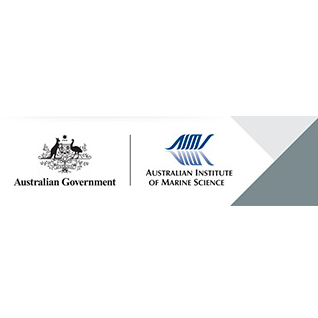Brief description
This dataset contains meteorological and sea temperature data from the weather station moored on Myrmidon Reef on the Great Barrier Reef. These data are collected to support scientific research at AIMS. Data are made available on request to other researchers and to the public. The weather station is an AIMS Mk3 System.Data recorded: Sea Temperature (~2m, ~4m, ~7m and ~18m at MSL), Barometric Pressure, Air Temperature, Solar Radiation (PAR), Wind Direction True (vector averaged), Wind Speed True (30 min average).This weather station has been deployed in two different locations on Myrmidon Reef.Location 1: -18.2746, 147.3830 from 1987 until June 1999Location 2: -18.267, 147.367 from June 1999 to present.1. Operation and Weather SensorsThe weather stations collect and store data in electronic memory every half-hour. A central base station calls each remote station regularly using HF radio or telephone lines. The data is transmitted over the radio as a frequency shift keyed signal, organised as packets of information. Errors are detected using parity and check sum methods. Invalid packets are identified by the Base Station, which requests they be sent again. This concept allows recovery of a very high percentage of the data despite poor communications. Remote stations store data for 21 days. Features such as automatic operation, remote control, remote time setting, built in diagnostics, have been developed and incorporated.The sensors are a key part of a weather station. The following are chosen considering the cost, reliability and accuracy.* R.M.Young manufactures the wind sensor, a model number 05103. It is a propeller type with the advantages of being highly linear, highly interchangeable and having a low threshold. Wind direction is measured as the direction the wind is coming from.* The solar radiation sensor is an Under Water Quantum Sensor made by Licor. It measures light in terms of its "Photosynthetically Active Radiation" (PAR). The spectral response is defined and weighted. Drift due to aging of the filters has proven to be a problem, but this applies to similar units too.* Temperature sensors are all Omega Interchangeable Thermistors. These are interchangeable and have high accuracy, but reliability has proven a problem. We are considering alternatives.* The barometric sensor was a modified Aanderaa type on earlier stations. The Mk2 stations were fitted with a Weathertronics Unit. Now all stations are Mk3 stations fitted with a Vaisala barometer which is more interchangeable and more accurate.2. System AccuracySystem accuracy is calculated as the sum of errors caused by: * Calibration * Interchanging sensors * Drift with time * Effects of an ambient temperature range from 0-40 degrees C.The following are the specifications of the sensors used with Mk3 stations. A new sensor suite will be used with Mk5 stations, partly based on the Vaisala WXT510 weather sensor.Both the temperature and wind sensors are interchangeable, and not individually calibrated, though some individual sensors have been checked against standards.* Air Temperature: Interchangeable thermistor and electronics is within +/- 0.4 deg. C, with a 30 seconds settling time in air. There are additional errors due to the aspiration of the temperature screen at low wind speeds.* Water temperature: Interchangeable thermistor and electronics is within +/- 0.4 deg. C, with a 30 minutes settling time in water. A higher precision in situ calibration is normally used (around +/- 0.1 degrees), traceable to a 0.04 degrees standard.* Solar radiation (PAR): +/- 5% of reading. Sensor drift is approximately -4% per year initially.* Barometric pressure: +/- 1 hecto Pascal.* Wind speed: 2% of reading +/- 0.1% FSD.* Wind direction: 2% of reading +/- 0.1% FSD.Electrical settling time for solar radiation and wind parameters is 7 seconds. This is necessary for anti-aliasing filters. Mk1 and Mk2 stations averaged 16 samples over the 16 seconds before logging. Mk3 stations use a continuously averaging software system. The wind readings are vector averaged, so direction is accounted for properly.Calibration procedures and routines are detailed on the Engineering website.3. Wind Sensor SpecificationThe following are additional specifications of the wind sensors used with Mk3 stations. A new sensor will be used with Mk5 stations. Wind sensors are mounted at a nominal 10 meters above water. The R.M. Young sensor has the following characteristics:* Wind SpeedRange: 0-60 m/sPitch: 29.4 cm air passes per rev.Distance constant: 2.7 m for 63% recovery* Wind DirectionRange: 360 deg, with 5 deg electrically open at northDamping ratio: 0.25Delay distance: 1.5 m for 50% recoveryThreshold: 1.0 m/s @ 10 deg.Displacement: 1.5 m/s @ 5 deg. displacement Damped w/length: 7.4 mUndamped w/length: 7.2 m4. Underwater Temperature SensorsThese sensors are interchangeable thermistors in Mk3 stations. They can be mounted a significant distance from the weather station, using a 2 wire connection. The basic accuracy is due to the use of interchangeable units. However improved accuracy is obtained by calibrating against a precision reference sensor in situ. These are in turn calibrated against a standard traceable to 0.04 degrees.Lineage
Maintenance and Update Frequency: continualNotes
CreditAustralia’s Integrated Marine Observing System (IMOS) is enabled by the National Collaborative Research Infrastructure Strategy (NCRIS). It is operated by a consortium of institutions as an unincorporated joint venture, with the University of Tasmania as Lead Agent.
Wireless Sensor Networks Facility, part of the Great Barrier Reef Ocean Observing System project (GBROOS) (IMOS)
Australian Institute of Marine Science (AIMS)
Modified: 17 10 2024
text: westlimit=147.367; southlimit=-18.267; eastlimit=147.367; northlimit=-18.267
Data access via Programming API
uri :
https://open-aims.github.io/data-platform/![]()
Data access using R
uri :
https://docs.ropensci.org/dataaimsr/![]()
Marine Weather Observations for Myrmidon Reef
uri :
https://weather.aims.gov.au/#/station/7![]()
global : 0887cb5b-b443-4e08-a169-038208109466
- global : 60b0d8f0-4ade-11dc-8f56-00008a07204e


